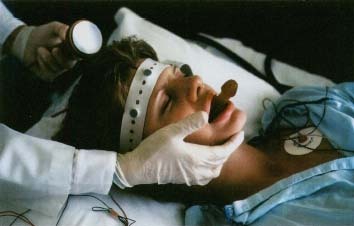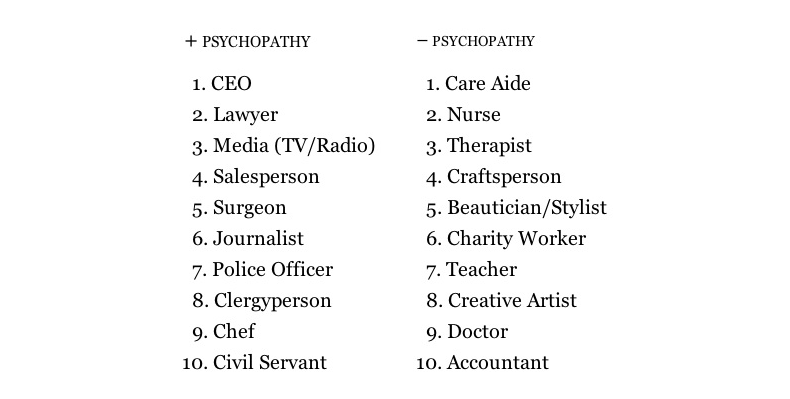Electroconvulsive therapy (ECT), formerly known as electroshock, is a psychiatric treatment in which seizures are electrically induced in anesthetized patients for therapeutic effect. Its mode of action is unknown. Today, ECT is most often recommended for use as a treatment for severe depression that has not responded to other treatment, and is also used in the treatment of mania and catatonia. Aside from effects in the brain, the general physical risks of ECT are similar to those of brief general anesthesia; the United States' Surgeon General's report says that there are "no absolute health contraindications" to its use.
Immediately following treatment, the most common adverse effects are confusion and memory loss. The state of confusion usually disappears after a few hours. It can be tolerated by pregnant women who are not suffering major complications. It can be used with diabetic or obese patients, and with caution in those whose cancers are in remission or under control. It can be used in some immunocompromised patients. It must be used very cautiously in people with epilepsy or other neurological disorders because by its nature it provokes small tonic-clonic seizures, and so would likely not be given to a person whose epilepsy is not well controlled.
 According to prominent ECT researcher Harold Sackeim, "despite over fifty years of clinical use and ongoing controversy", until 2007 there had "never been a large-scale, prospective study of the cognitive effects of ECT." In this first-ever large-scale study (347 subjects), Sackeim and colleagues found that at least some forms (namely bilateral application and outdated sine-wave currents) of ECT "routine[ly]" lead to "adverse cognitive effects," including global cognitive deficits and memory loss, that persist for up to six months after treatment, suggesting that the induced deficits may be permanent.
According to prominent ECT researcher Harold Sackeim, "despite over fifty years of clinical use and ongoing controversy", until 2007 there had "never been a large-scale, prospective study of the cognitive effects of ECT." In this first-ever large-scale study (347 subjects), Sackeim and colleagues found that at least some forms (namely bilateral application and outdated sine-wave currents) of ECT "routine[ly]" lead to "adverse cognitive effects," including global cognitive deficits and memory loss, that persist for up to six months after treatment, suggesting that the induced deficits may be permanent.Another form of therapy is Cranial Electrotherapy Stimulation (CES) is a psychiatric treatment that applies a small, pulsed electric current across a patient's head. Some researchers and doctors claim that CES has beneficial effects in conditions such as anxiety, depression, insomnia and stress.
Alternatively Transcranial direct current stimulation (tDCS) is a form of neurostimulation which uses constant, low current delivered directly to the brain area of interest via small electrodes. tDCS was originally developed to help patients with brain injuries such as strokes. Tests on healthy adults demonstrated that tDCS can increase cognitive performance on a variety of tasks, depending on the area of the brain being stimulated. tDCS has been utilized to enhance language and mathematical ability, attention span, problem solving, memory, and coordination. Transcranial direct current stimulation works by sending constant, low direct current through the electrodes. When these electrodes are placed in the region of interest, the current induces intracerebral current flow. This current flow then either increases or decreases the neuronal excitability in the specific area being stimulated based on which type of stimulation is being used.
This change of neuronal excitability leads to alteration of brain function, which can be used in various therapies as well as to provide more information about the functioning of the human brain. The way that the stimulation changes brain function is either by causing the neuron’s resting membrane potential to depolarize or hyperpolarize. When positive stimulation (anodal tDCS) is delivered, the current causes a depolarization of the resting membrane potential, which increases neuronal excitability and allows for more spontaneous cell firing. When negative stimulation (cathodal tDCS) is delivered, the current causes a hyperpolarization of the resting membrane potential. This decreases neuron excitability due to the decreased spontaneous cell firing. There is no strict limitation on the duration of stimulation set at this point but a stimulation time of 20 minutes is considered the ideal time.
The longer the stimulation duration, the longer the observed effects of the stimulation persist once the stimulation has ended. A stimulation length of 10 minutes results in observed effects lasting for up to an hour. There are no known risks of tDCS at this time, but since this technique of stimulation is still being explored, safety precautions should be kept, as well as the effects to the brain.
Electro-stimulation can provide benefits to the rest of the body by way of electrical muscle stimulation, also known as neuromuscular electrical stimulation (NMES) or electromyostimulation, is the elicitation of muscle contraction using electric impulses. EMS has received increasing attention in the last few years, because it has the potential to serve as: a strength training tool for healthy subjects and athletes; a rehabilitation and preventive tool for partially or totally immobilized patients; a testing tool for evaluating the neural and/or muscular function in vivo; a post-exercise recovery tool for athletes.
EMS devices cause a calorie burning that is marginal at best: calories are burnt in significant amount only when most of the body is involved in physical exercise: several muscles, the heart and the respiratory system are all engaged at once. However, some authors imply that EMS can lead to exercise, since a person toning his/her muscles with electrical stimulation is more likely afterwards to participate in sporting activities as the body is ready, fit, willing and able to take on physical activity.
While most electro therapies claim some beneficial effects from mild electrical contact. There have been other ideas to try electrical stimulation in a erotic methodology. Utilizing Nikola Tesla's high voltage low current tesla coil, one of the first electro sex toys was a machine called "The violet wand".
A violet wand creates shock sensation when there is a gap between the electrode or the attachment and the body. As the wand is held near to the body, the spark will jump, providing the sensation. Full contact with an accessory creates a slightly warm sensation, but a violet wand provides a wide range of physical sensation properties with different settings and attachments. Violet Wands can be used anywhere on the body but should not be used around the eyes.
Electrostimulation, in general, can cause tissue damage or even death if misused.
The most common problems arising from electrostimulation tend to be burns from lack of lubrication or bad contact between the electrode and the skin's surface. Even at relatively low current and voltage, there is also risk of interference with normal heart function (potentially including cardiac arrest), and this risk is higher for those who use an artificial pacemaker or similar device or who have heart conditions. Because of this, it is not advisable to place the electrical contacts in such a way that current passes through the chest cavity. Newcomers are encouraged to research the hazards, limitations, and techniques of electrostimulation and the devices used.
There have been modifications to a typical muscle stimulator using electrode pads placed around the genitals can provide the erotic effect. The popular designs are the violet wand or artificial phallus place inside the female genitals for stimulation, these have been the safer choice considering most are battery operated. The use of remote control gives the flexibility to the consumer and with connectivity to allow long distance relationships to sexually blossom. But despite the images to the misuse of electro-shock therapy portrayed in horror film, its still likely that electricity will play a part in our lives as well as our wellbeing.




















